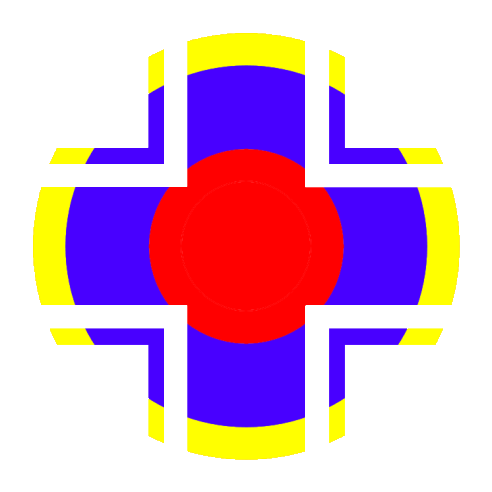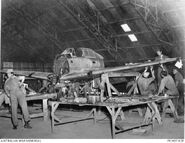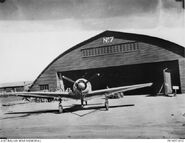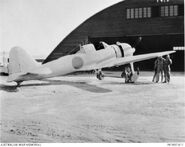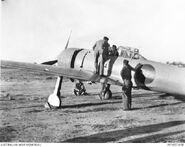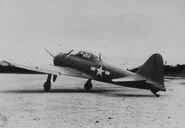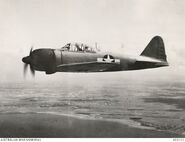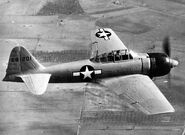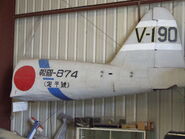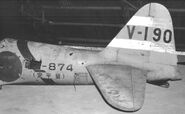History[]
In 1942 the Allies in North Australia, just having become of the shock of opposing the A6M2 'Zeke', were suddenly confronted with yet another new Japanese Navy fighter, at least: that's what they initially thought. Having squared-off wingtips, the A6M3 was not immediately recognized for a new version of the A6M 'Zeke', so it got a new code name: 'Hap'. When US Army Air Force General Arnold (whose nick name was 'Hap') heard about the proposed code name, it was changed to 'Hamp' instead.[1] Soon teams went out to discover shot-down 'Hamps', in order to find out more about them. As the Allies did not find a single intact airframe, it was decided to build a hybrid aircraft out of several A6M3's that were found in the Buna area.
Building a hybrid[]
The main airframe chosen for this hybrid was C/n 3030, tail code Q-102 of the 2nd Kōkūtai, whose main fuselage and wing sections were selected as being the most intact to repair as a flyable A6M3 Hamp hybrid.[2] Other parts came from C/n 3028, tail code V-187 of the Tainan Air Group (台南海軍航空隊 Tainan Kaigun Kōkūtai) (engine[3]) and C/n 3032, tail code V-190 of the Tainan Kaigun Kōkūtai (rear fuselage and other components[4]). All these three aircraft had been found at Buna during late December 1942 to early January 1943. The captured Zeros were loaded aboard a barge and shipped to Brisbane and then transported to Hangar 7 at Eagle Farm Airfield.[5][6]
At Eagle Farm Airfield this Zero was reconstructed from parts of at the three above named airframes plus minor parts from other Zero wrecks captured at Buna Airfield, before being tested by ATAIU as aircraft XJ001 at Eagle Farm Airbase, Brisbane, Queensland, Australia. At one time, it appeared to have been painted overall gray, but at first it was painted with American 'star' markings. It was also repainted at one time in Japanese markings for the use in aircraft recognition manuals. Last Australian painting scheme was with full US 'Star and Bar' markings.
Later, it was shipped to the USA for further testing at Wright Field, coded EB-201 and later also at Eglin Field.
The ultimate fate of this Zero is unknown. Likely scrapped or otherwise disappeared at the end of the war or after testing was completed. The Planes of Fame Museum claims to have the rear fuselage and shows it in its V-190 form.
Sources[]
- ↑ https://en.wikipedia.org/wiki/Mitsubishi_A6M_Zero#Name
- ↑ https://www.pacificwrecks.com/aircraft/a6m3/3030.html
- ↑ https://www.pacificwrecks.com/aircraft/a6m3/3028.html
- ↑ https://www.pacificwrecks.com/aircraft/a6m3/3032.html
- ↑ http://www.ozatwar.com/usaaf/atiu.htm
- ↑ https://www.pacificwrecks.com/aircraft/a6m3/eagle_farm.html
